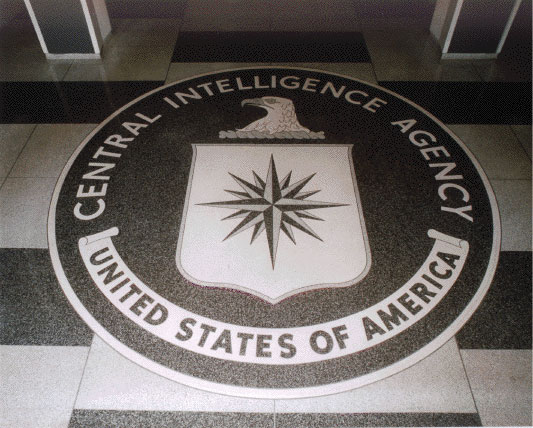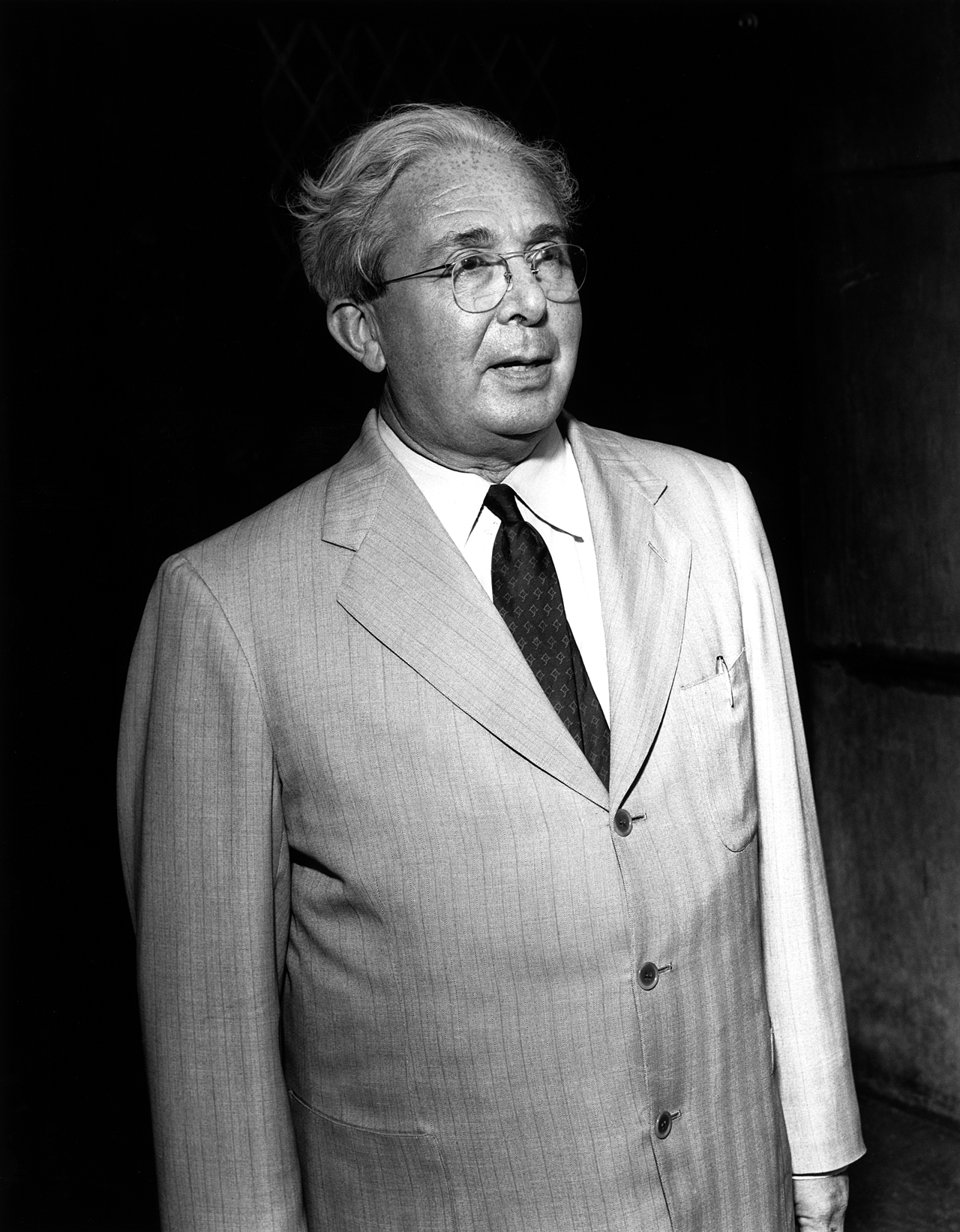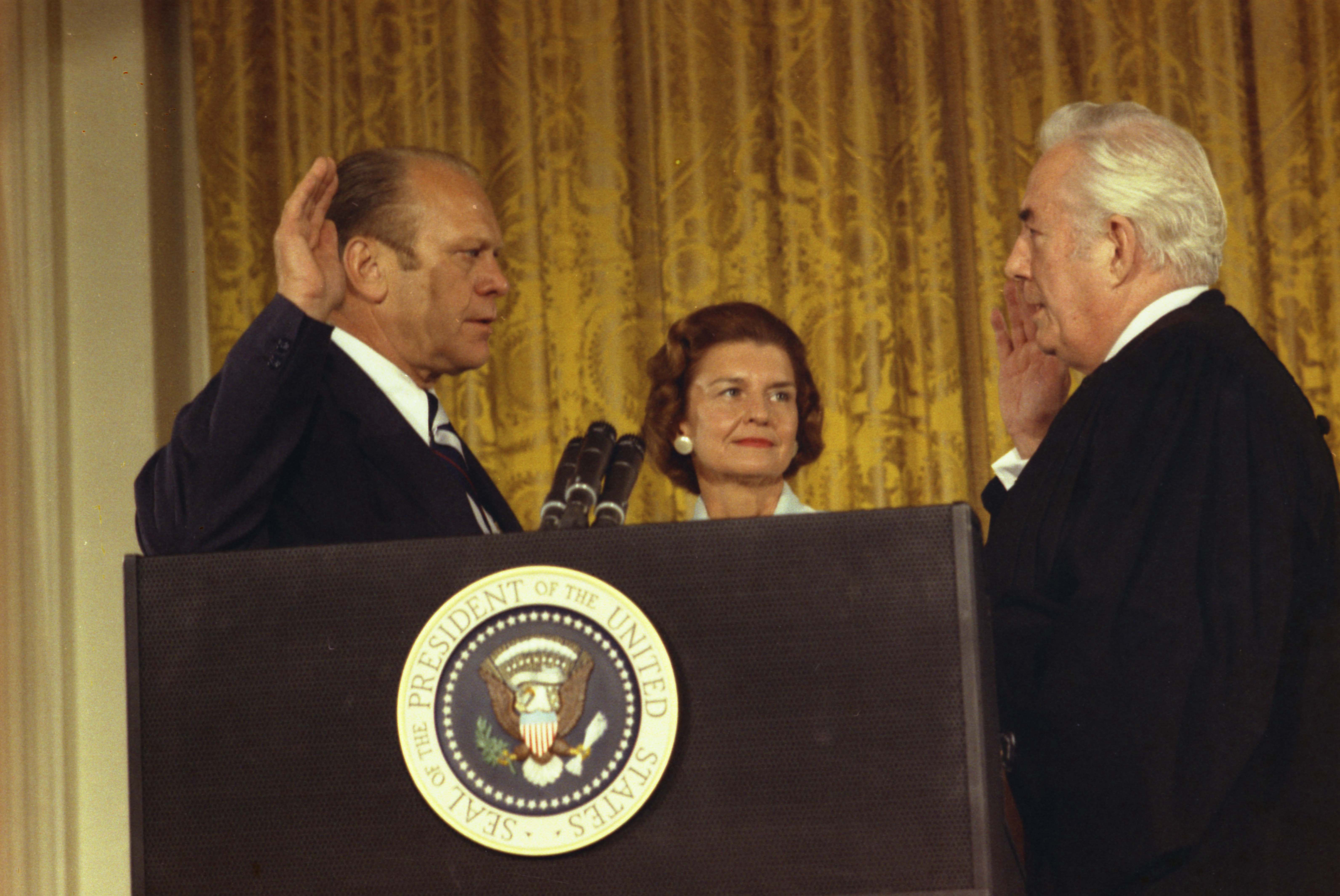|
Atomic Weapons Rewards Act Of 1955
Atomic Weapons Rewards Act of 1955 authorized financial transactions for information pertaining to the unlawful acquisition, importation, or manufacture of special nuclear material into the United States. The United States federal statute specifies financial reward payments of fifty thousand dollars be approved by the United States President with an inclusion not to exceed five hundred thousand dollars. The Act of Congress established an Awards Board embodying Federal Directorates from Secretary of the Treasury, Secretary of Defense, Attorney General, Central Intelligence, and Atomic Energy Commission. Senate bill 609 legislation was passed by the 84th United States Congressional session and enacted into law by the 34th President of the United States Dwight Eisenhower on July 15, 1955. Sections of the Act Atomic Weapons Rewards Act was authored as seven sections defining the United States codified law formulation for appropriating United States currency for fissile material ... [...More Info...] [...Related Items...] OR: [Wikipedia] [Google] [Baidu] |
War And National Defense
War is an intense armed conflict between states, governments, societies, or paramilitary groups such as mercenaries, insurgents, and militias. It is generally characterized by extreme violence, destruction, and mortality, using regular or irregular military forces. Warfare refers to the common activities and characteristics of types of war, or of wars in general. Total war is warfare that is not restricted to purely legitimate military targets, and can result in massive civilian or other non-combatant suffering and casualties. While some war studies scholars consider war a universal and ancestral aspect of human nature, others argue it is a result of specific socio-cultural, economic or ecological circumstances. Etymology The English word ''war'' derives from the 11th-century Old English words ''wyrre'' and ''werre'', from Old French ''werre'' (also ''guerre'' as in modern French), in turn from the Frankish *''werra'', ultimately deriving from the Proto-Germanic *''we ... [...More Info...] [...Related Items...] OR: [Wikipedia] [Google] [Baidu] |
Director Of Central Intelligence
The director of central intelligence (DCI) was the head of the American Central Intelligence Agency from 1946 to 2005, acting as the principal intelligence advisor to the president of the United States and the United States National Security Council, as well as the coordinator of intelligence activities among and between the various US intelligence agencies (collectively known as the United States Intelligence Community, Intelligence Community from 1981 onwards). The office existed from January 1946 to April 21, 2005. After the Intelligence Reform and Terrorism Prevention Act it was replaced by the Director of National Intelligence, director of national intelligence (DNI) as head of the Intelligence Community and the director of the Central Intelligence Agency (D/CIA) as head of the CIA. History The post of DCI was established by President of the United States, President Harry Truman on January 23, 1946, with Admiral Sidney Souers being the first DCI, followed by General Hoy ... [...More Info...] [...Related Items...] OR: [Wikipedia] [Google] [Baidu] |
Atomic Energy Act Of 1954
The Atomic Energy Act of 1954, 42 U.S.C. §§ 2011-2021, 2022-2286i, 2296a-2297h-13, is a United States federal law that covers for the development, regulation, and disposal of nuclear materials and facilities in the United States. It was an amendment to the Atomic Energy Act of 1946 and substantially refined certain aspects of the law, including increased support for the possibility of a civilian nuclear industry. Notably it made it possible for the government to allow private companies to gain technical information (Restricted Data) about nuclear energy production and the production of fissile materials, allowing for greater exchange of information with foreign nations as part of President Dwight D. Eisenhower's Atoms for Peace program, and reversed certain provisions in the 1946 law which had made it impossible to patent processes for generating nuclear energy or fissile materials. The H.R. 9757 legislation was passed by the 83rd U.S. Congressional session and signed into law ... [...More Info...] [...Related Items...] OR: [Wikipedia] [Google] [Baidu] |
History Of Nuclear Weapons
Nuclear weapons possess enormous destructive power from nuclear fission or combined fission and fusion reactions. Building on scientific breakthroughs made during the 1930s, the United States, the United Kingdom, Canada, and free France collaborated during World War II, in what was called the Manhattan Project, to build a fission weapon, also known as an atomic bomb. In August 1945, the atomic bombings of Hiroshima and Nagasaki were conducted by the United States against Japan at the close of that war, standing to date as the only use of nuclear weapons in hostilities. The Soviet Union started development shortly after with their own atomic bomb project, and not long after, both countries were developing even more powerful fusion weapons known as hydrogen bombs. Britain and France built their own systems in the 1950s, and the list of states with nuclear weapons has gradually grown larger in the decades since. Physics and politics in the 1930s and 1940s In the first decades of t ... [...More Info...] [...Related Items...] OR: [Wikipedia] [Google] [Baidu] |
Atomic Age
The Atomic Age, also known as the Atomic Era, is the period of history following the detonation of the first nuclear weapon, The Gadget at the ''Trinity'' test in New Mexico, on July 16, 1945, during World War II. Although nuclear chain reactions had been hypothesized in 1933 and the first artificial self-sustaining nuclear chain reaction ( Chicago Pile-1) had taken place in December 1942, the Trinity test and the ensuing bombings of Hiroshima and Nagasaki that ended World War II represented the first large-scale use of nuclear technology and ushered in profound changes in sociopolitical thinking and the course of technological development. While atomic power was promoted for a time as the epitome of progress and modernity, entering into the nuclear power era also entailed frightful implications of nuclear warfare, the Cold War, mutual assured destruction, nuclear proliferation, the risk of nuclear disaster (potentially as extreme as anthropogenic global nuclear winter), as ... [...More Info...] [...Related Items...] OR: [Wikipedia] [Google] [Baidu] |
Glienicke Bridge
The Glienicke Bridge (german: Glienicker Brücke, ) is a bridge across the Havel River in Germany, connecting the Wannsee district of Berlin with the Brandenburg capital Potsdam. It is named after nearby Glienicke Palace. The current bridge, the fourth on the site, was completed in 1907, although major reconstruction was necessary after it was damaged during World War II. During the Cold War, as this portion of the Havel River formed the border between West Berlin and East Germany, the bridge was used several times for the exchange of captured spies and thus became known as the ''Bridge of Spies''. Location The bridge spans the Havel narrows between the Jungfernsee (lake) to the north and the Glienicker Lake to the south. It carries the Bundesstraße 1 highway. The Glienicke Palace and Jagdschloss Glienicke are situated (across the highway from each other) near the east (Berlin) end of the bridge. Potsdam tram route 93 from Potsdam main station and Berlin bus route 316 from W ... [...More Info...] [...Related Items...] OR: [Wikipedia] [Google] [Baidu] |
1958 US–UK Mutual Defence Agreement
Events January * January 1 – The European Economic Community (EEC) comes into being. * January 3 – The West Indies Federation is formed. * January 4 ** Edmund Hillary's Commonwealth Trans-Antarctic Expedition completes the third overland journey to the South Pole, the first to use powered vehicles. ** Sputnik 1 (launched on October 4, 1957) falls to Earth from its orbit, and burns up. * January 13 – Battle of Edchera: The Moroccan Army of Liberation ambushes a Spanish patrol. * January 27 – A Soviet-American executive agreement on cultural, educational and scientific exchanges, also known as the "Lacy-Zarubin Agreement, Lacy–Zarubin Agreement", is signed in Washington, D.C. * January 31 – The first successful American satellite, Explorer 1, is launched into orbit. February * February 1 – Egypt and Syria unite, to form the United Arab Republic. * February 6 – Seven Manchester United F.C., Manchester United footballers are among the 21 people killed i ... [...More Info...] [...Related Items...] OR: [Wikipedia] [Google] [Baidu] |
Presidency Of Gerald Ford
Gerald Ford's tenure as the 38th president of the United States began on August 9, 1974, upon the resignation of Richard Nixon from office, and ended on January 20, 1977, a period of days. Ford, a Republican from Michigan, had served as vice president since December 6, 1973, following Spiro Agnew's resignation from that office. Ford was the only person to serve as president without being elected to either the presidency or the vice presidency. His presidency ended following his defeat in the 1976 presidential election by Democrat Jimmy Carter. Ford took office in the aftermath of the Watergate scandal and in the final stages of the Vietnam War, both of which engendered a new disillusion in American political institutions. Ford's first major act upon taking office was to grant a presidential pardon to Nixon for his role in the Watergate scandal, prompting a major backlash to Ford's presidency. He also created a conditional clemency program for Vietnam War draft dodgers. Much ... [...More Info...] [...Related Items...] OR: [Wikipedia] [Google] [Baidu] |
Travel Visa
A visa (from the Latin ''charta visa'', meaning "paper that has been seen") is a conditional authorization granted by a polity to a foreigner that allows them to enter, remain within, or leave its territory. Visas typically include limits on the duration of the foreigner's stay, areas within the country they may enter, the dates they may enter, the number of permitted visits, or if the individual has the ability to work in the country in question. Visas are associated with the request for permission to enter a territory and thus are, in most countries, distinct from actual formal permission for an alien (law), alien to enter and remain in the country. In each instance, a visa is subject to border control, entry permission by an immigration official at the time of actual entry and can be revoked at any time. Visa evidence most commonly takes the form of a sticker endorsed in the applicant's passport or other travel document but may also exist electronically. Some countries no lon ... [...More Info...] [...Related Items...] OR: [Wikipedia] [Google] [Baidu] |
Fissile Material
In nuclear engineering, fissile material is material capable of sustaining a nuclear fission chain reaction. By definition, fissile material can sustain a chain reaction with neutrons of thermal energy. The predominant neutron energy may be typified by either slow neutrons (i.e., a thermal system) or fast neutrons. Fissile material can be used to fuel thermal-neutron reactors, fast-neutron reactors and nuclear explosives. Fissile vs fissionable According to the Ronen fissile rule, for a heavy element with 90 ≤ ''Z'' ≤ 100, its isotopes with , with few exceptions, are fissile (where ''N'' = number of neutrons and ''Z'' = number of protons).The fissile rule thus formulated indicates 33 isotopes as likely fissile: Th-225, 227, 229; Pa-228, 230, 232; U-231, 233, 235; Np-234, 236, 238; Pu-237, 239, 241; Am-240, 242, 244; Cm-243, 245, 247; Bk-246, 248, 250; Cf-249, 251, 253; Es-252, 254, 256; Fm-255, 257, 259. Only fourteen (including a long-lived ... [...More Info...] [...Related Items...] OR: [Wikipedia] [Google] [Baidu] |
United States Dollar
The United States dollar ( symbol: $; code: USD; also abbreviated US$ or U.S. Dollar, to distinguish it from other dollar-denominated currencies; referred to as the dollar, U.S. dollar, American dollar, or colloquially buck) is the official currency of the United States and several other countries. The Coinage Act of 1792 introduced the U.S. dollar at par with the Spanish silver dollar, divided it into 100 cents, and authorized the minting of coins denominated in dollars and cents. U.S. banknotes are issued in the form of Federal Reserve Notes, popularly called greenbacks due to their predominantly green color. The monetary policy of the United States is conducted by the Federal Reserve System, which acts as the nation's central bank. The U.S. dollar was originally defined under a bimetallic standard of (0.7735 troy ounces) fine silver or, from 1837, fine gold, or $20.67 per troy ounce. The Gold Standard Act of 1900 linked the dollar solely to gold. From 1934, it ... [...More Info...] [...Related Items...] OR: [Wikipedia] [Google] [Baidu] |
Codification (law)
In law, codification is the process of collecting and restating the law of a jurisdiction in certain areas, usually by subject, forming a legal code, i.e. a codex (book) of law. Codification is one of the defining features of civil law jurisdictions. In common law systems, such as that of English law, codification is the process of converting and consolidating judge-made law or uncodified statutes enacted by the legislature into statute law. History Ancient Sumer's Code of Ur-Nammu was compiled ''circa'' 2050–1230 BC, and is the earliest known surviving civil code. Three centuries later, the Babylonian king Hammurabi enacted the set of laws named after him. Important codifications were developed in the ancient Roman Empire, with the compilations of the Lex Duodecim Tabularum and much later the Corpus Juris Civilis. These codified laws were the exceptions rather than the rule, however, as during much of ancient times Roman laws were left mostly uncodified. The firs ... [...More Info...] [...Related Items...] OR: [Wikipedia] [Google] [Baidu] |




.jpg)
.jpg)




.jpg)